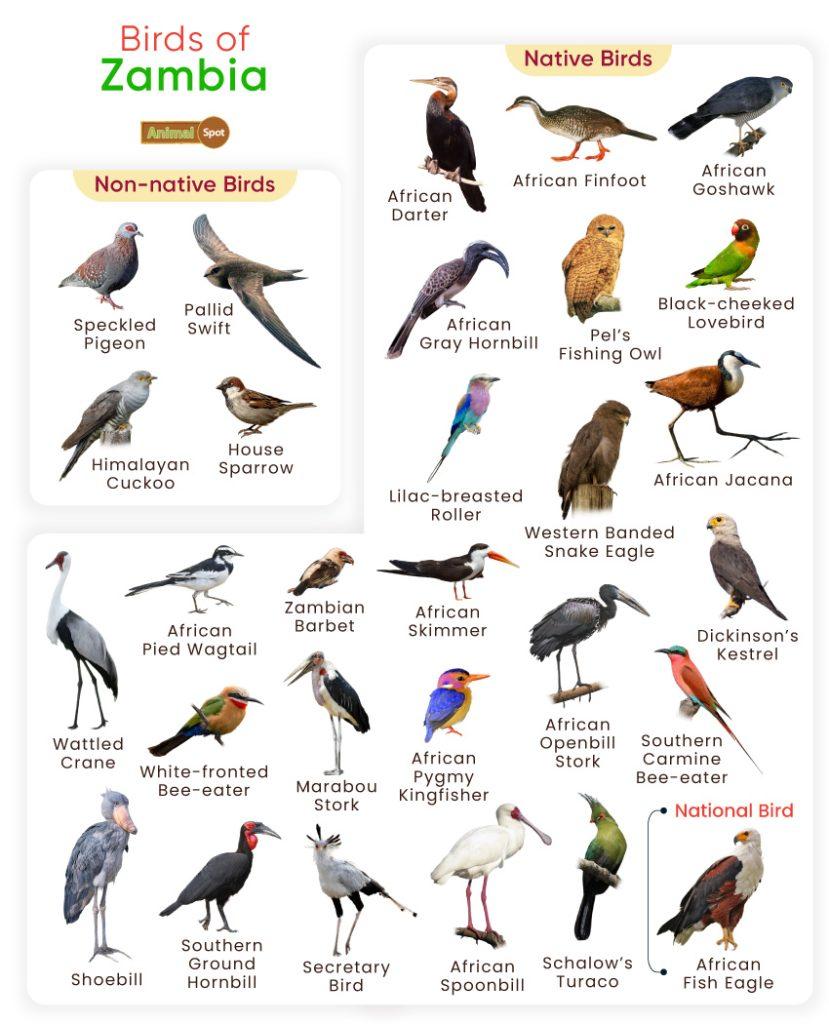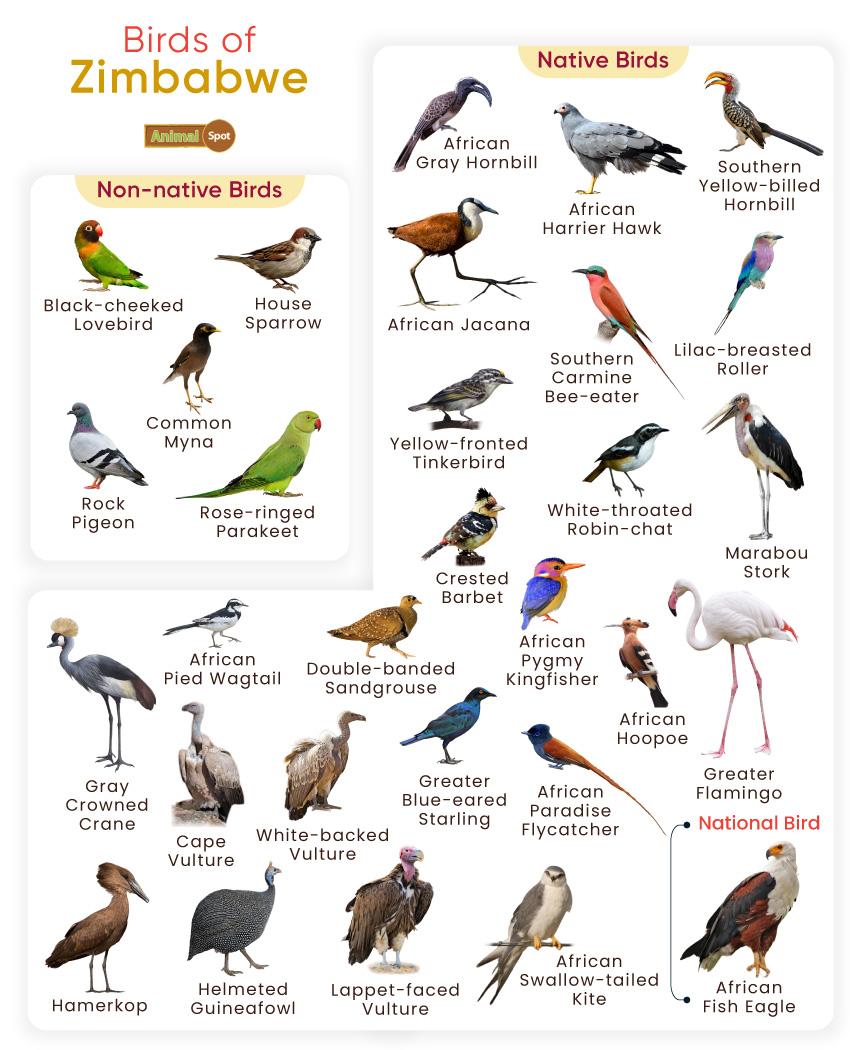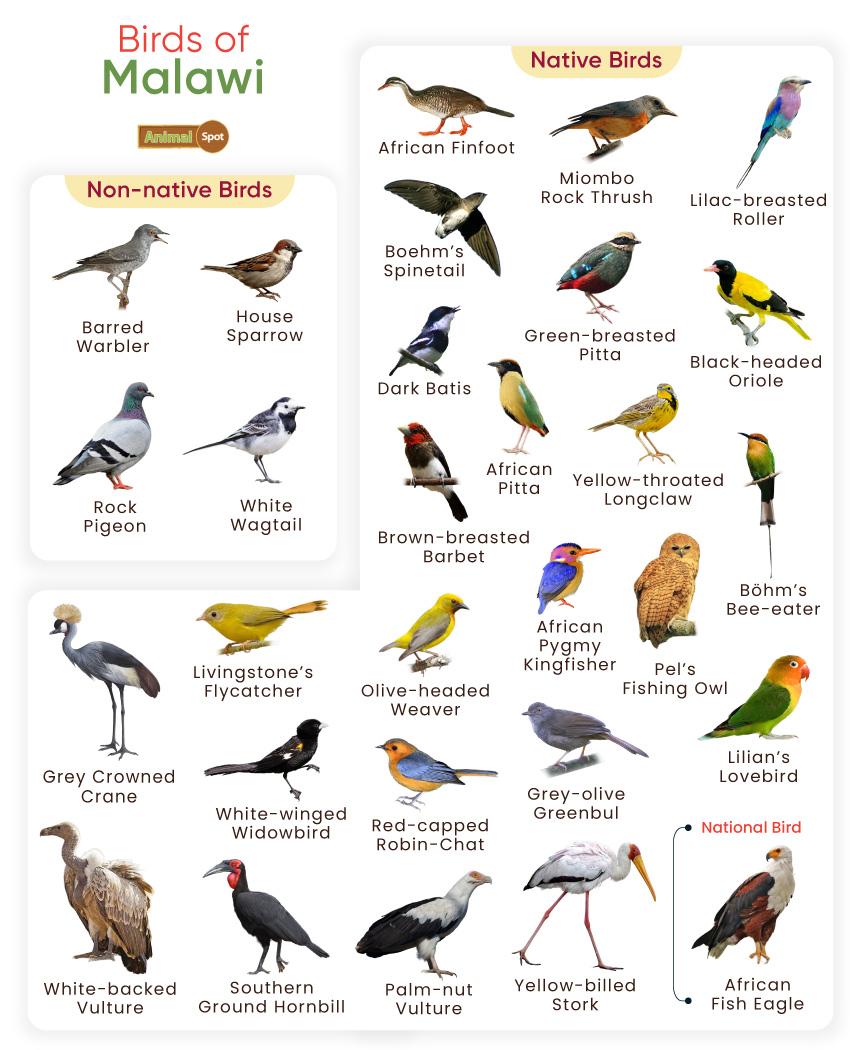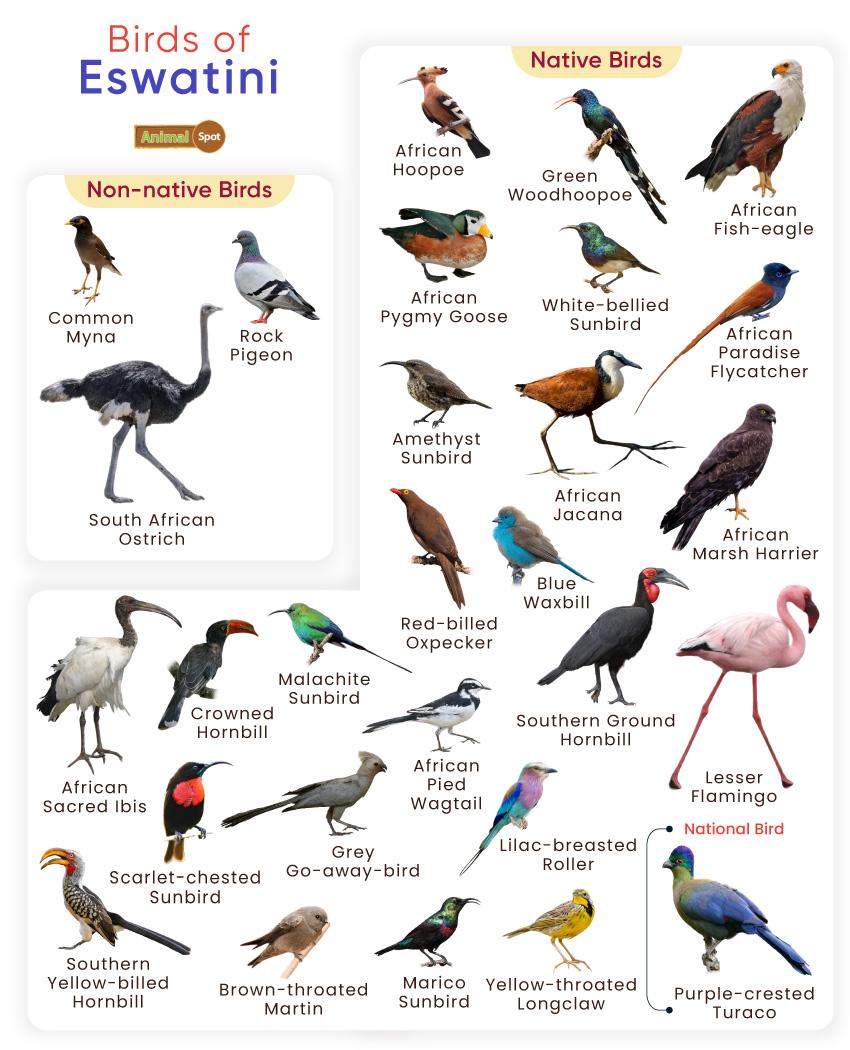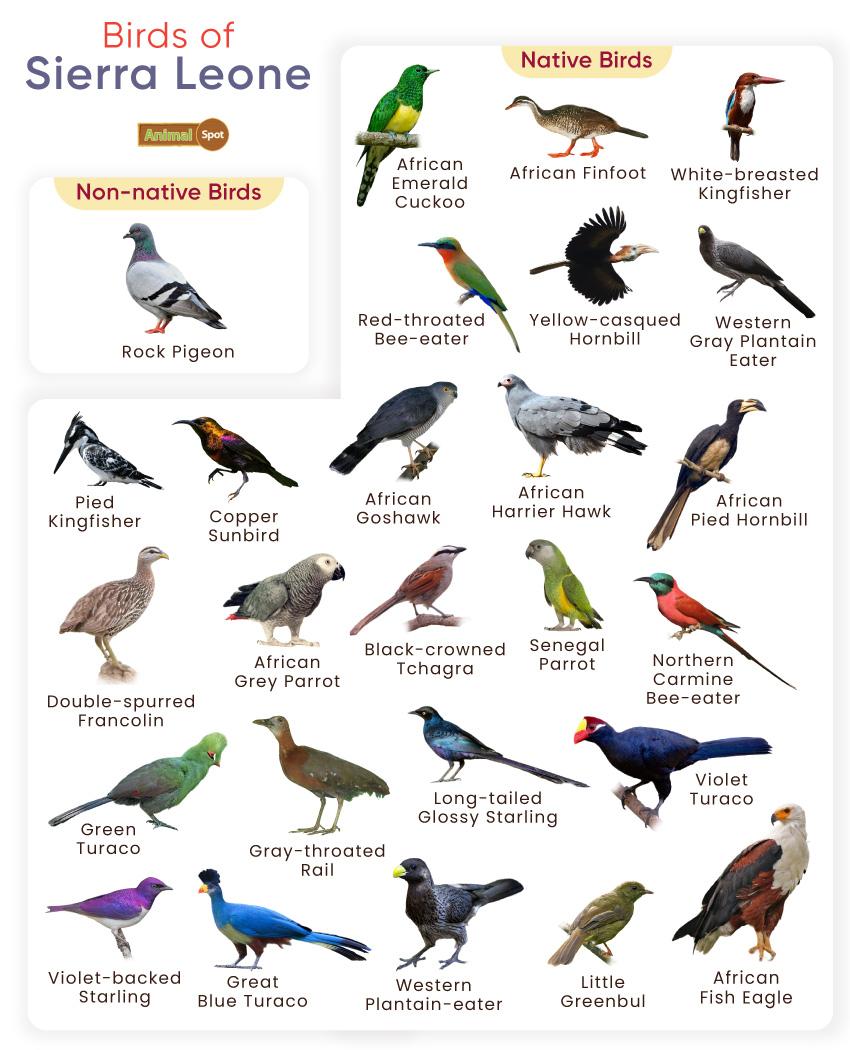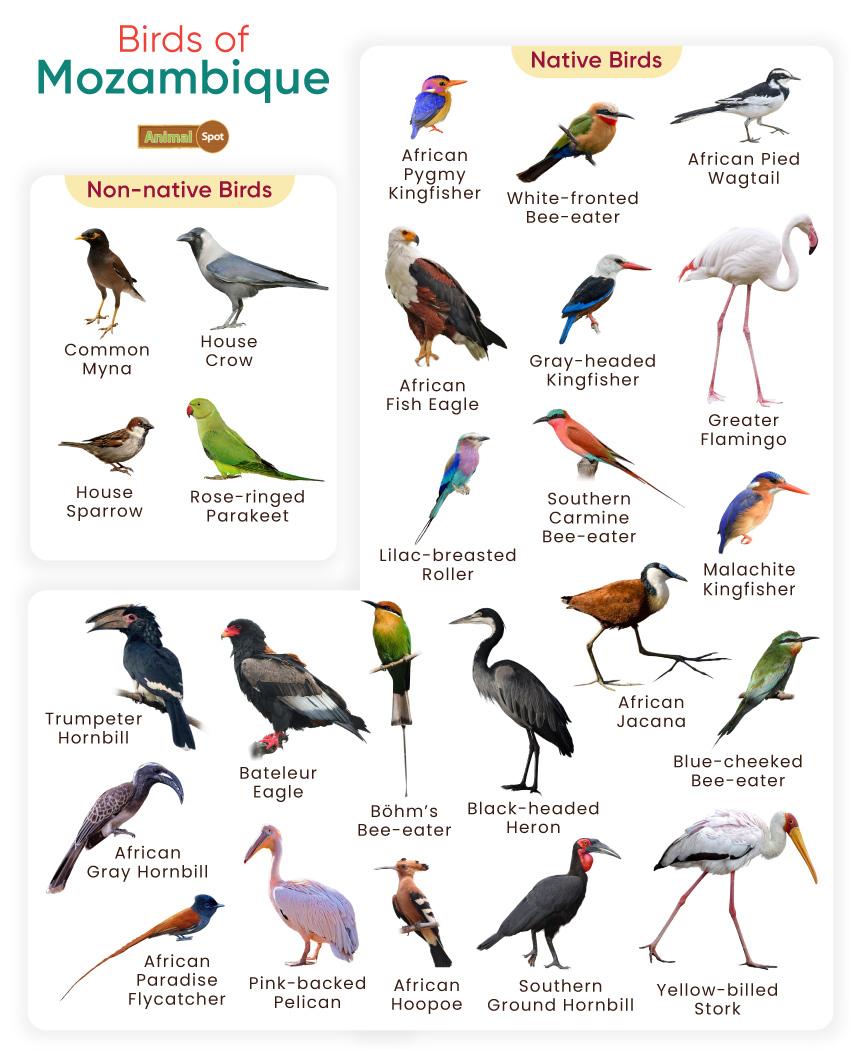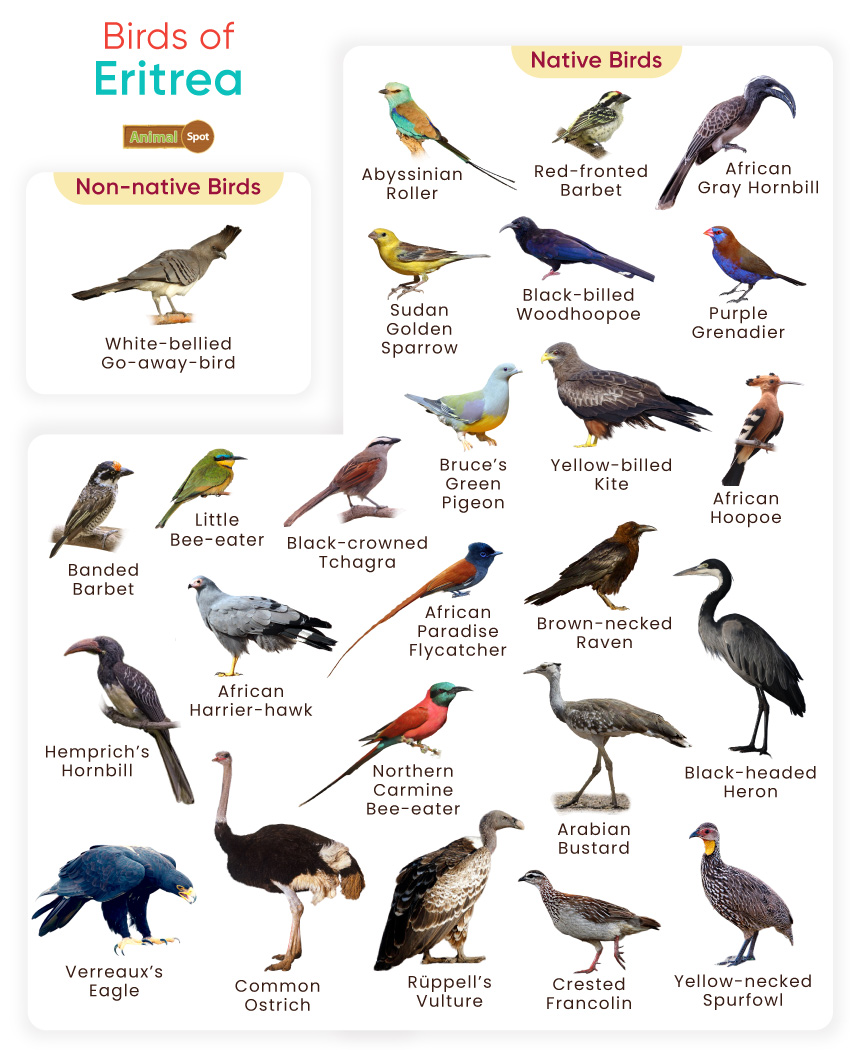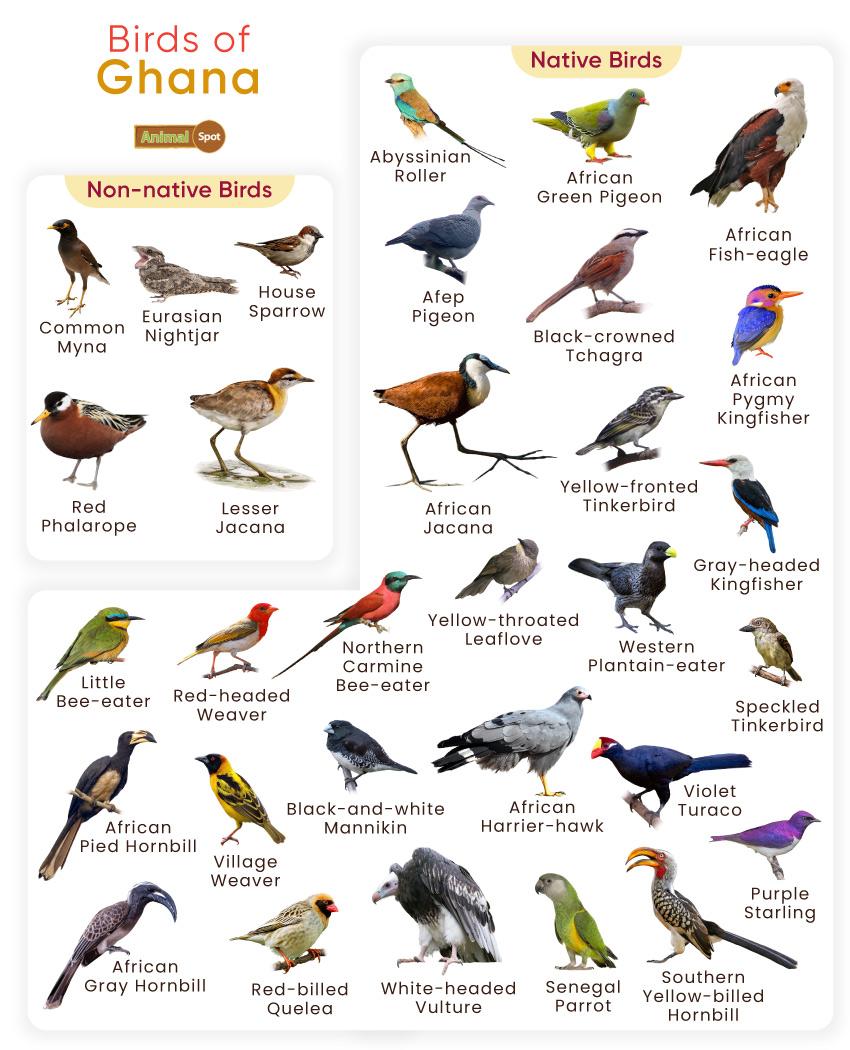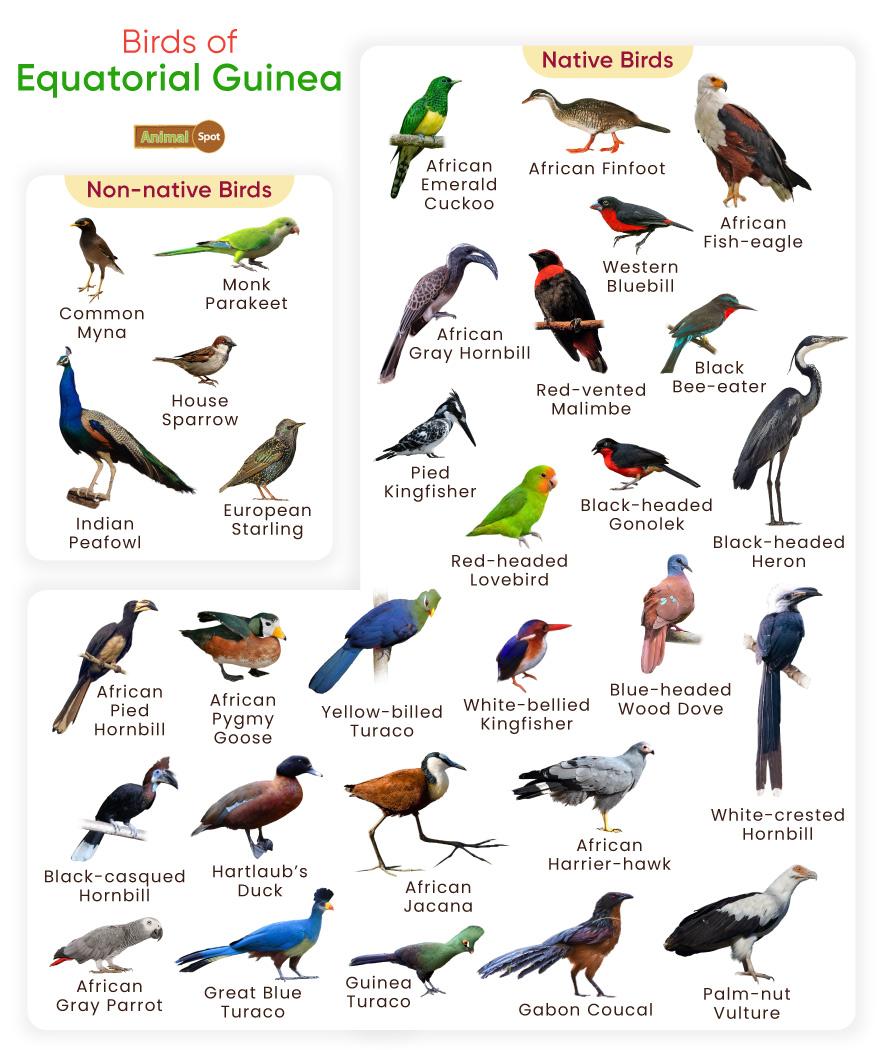About 900 species of birds live in Zambia. The nation has several terrestrial ecosystems, including grasslands, forests, thickets, and woodlands. These habitats support the wide variety of avian species that live here.
The national bird of Zambia is the majestic African Fish Eagle. Other notable birds include the Lilac-breasted Roller, the African Gray Hornbill, and the Southern Carmine Bee-eater.
List of Common Birds Found in Zambia
Native Birds
- African Black Crake
- African Black Swift
- African Crake
- African Cuckoo Hawk
- African Darter
- African Emerald Cuckoo
- African Finfoot
- African Fish Eagle
- African Golden Oriole
- African Goshawk
- African Gray Hornbill
- African Green Pigeon
- African Harrier-hawk
- African Hawk-eagle
- African Hoopoe
- African Jacana
- African Marsh Harrier
- African Mourning Dove
- African Openbill
- African Palm Swift
- African Paradise Flycatcher
- African Pied Hornbill
- African Pied Wagtail
- African Pygmy Goose
- African Pygmy Kingfisher
- African Rail
- African Rock Martin
- African Sacred Ibis
- African Scops Owl
- African Skimmer
- African Spoonbill
- African Swallow-tailed Kite
- African Wattled Lapwing
- Allen’s Gallinule
- Augur Buzzard
- Ayres’s Hawk-eagle
- Banded Martin
- Bateleur
- Black-cheeked Lovebird
- Black Coucal
- Black-crowned Night Heron
- Black-headed Oriole
- Black-winged Stilt
- Boehm’s Bee-eater
- Bradfield’s Hornbill
- Broad-billed Roller
- Cape Teal
- Cape Turtle Dove
- Cattle Egret
- Collared Pratincole
- Common Hoopoe
- Common Moorhen
- Common Ostrich
- Common Scimitarbill
- Corn Crake
- Dark Chanting Goshawk
- Dickinson’s Kestrel
- Dideric Cuckoo
- Emerald-spotted Wood Dove
- European Bee-eater
- European Roller
- Fawn-colored Lark
- Flappet Lark
- Gabar Goshawk
- Goliath Heron
- Gray Crowned Crane
- Gray Go-away Bird
- Great Spotted Cuckoo
- Great White Pelican
- Green Woodhoopoe
- Hadada Ibis
- Hamerkop
- Helmeted Guineafowl
- Hooded Vulture
- Klaas’s Cuckoo
- Lappet-faced Vulture
- Lesser Jacana
- Lesser Moorhen
- Lilac-breasted Roller
- Little Bee-eater
- Little Grebe
- Little Sparrowhawk
- Lizard Buzzard
- Long-crested Eagle
- Long-toed Lapwing
- Marabou Stork
- Marsh Owl
- Martial Eagle
- Narina Trogon
- Pale Chanting Goshawk
- Pearl-spotted Owlet
- Pel’s Fishing Owl
- Pied Avocet
- Pied Crow
- Pied Kingfisher
- Pink-breasted Lark
- Pin-tailed Whydah
- Purple Roller
- Red-eyed Dove
- Red-throated Wryneck
- Rufous-crowned Roller
- Rufous-naped Lark
- Schalow’s Turaco
- Secretary Bird
- Senegal Coucal
- Shoebill
- Slaty Egret
- Southern Carmine Bee-eater
- Southern Ground Hornbill
- Southern Yellow-billed Hornbill
- Speckled Mousebird
- Swallow-tailed Bee-eater
- Tawny Eagle
- Three-banded Plover
- Verreaux’s Eagle-owl
- Village Weaver
- Wahlberg’s Eagle
- Water Thick-knee
- Wattled Crane
- Western Banded Snake Eagle
- White-backed Vulture
- White-browed Coucal
- White-fronted Bee-eater
- White-headed Lapwing
- White-rumped Swift
- Woodland Kingfisher
- Yellow-billed Duck
- Yellow-fronted Canary
- Zambian Barbet
Non-native Birds
- Eared Grebe
- Golden Pipit
- Himalayan Cuckoo
- House Sparrow
- Kori Bustard
- Little Ringed Plover
- Pallid Swift
- Scaly Francolin
- South African Shelduck
- Speckled Pigeon
Zambia’s best birding sites include South Luangwa National Park, Kafue National Park, and Lower Zambezi National Park. The peak birding season in Zambia typically coincides with the country’s wet season, which runs from November to April. During this time, the rains bring about an explosion of life and abundance of food, making it an ideal time for birds to breed, nest, and raise their chicks.

